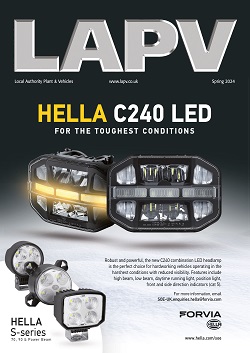The share of four to seven-year-old coomercial vehicles (CVs) on our roads is forecast to rise from 17% in 2016 to 21% in 2025, opening up opportunities for CV aftermarket products and services, according to business consultancy Frost & Sullivan.
This will intensify the competition between independent aftermarket (IAM) and original equipment manufacturers (OEMs) and result in the expansion of OE service (OES) channels.
OEMs are expected to flood the aftermarket with economy-line products for post-warranty trucks as well as attract new classes of buyers with innovative logistics models, such as Uber for trucks and Big Data analytics for total cost of ownership optimisation.
These are some of the conclusions of Frost & Sullivan's analysis of the independent aftermarket as well as OES or dealer service channel. The study covers light CVs, medium CVs and heavy CVs; the macro indicators for the aftermarket; and emerging opportunities, business models and country-level analysis for Germany, France, the UK, Italy, Spain and Russia.
'There is a large market for aftermarket solutions that significantly increase customer engagement and convenience in CVs,' said Frost & Sullivan Principal Consultant Avijit Ghosh.
'OEMs will integrate remote diagnostic and prognostic solutions using telematics into their fleet management solutions to create more visibility and business for dealer channels. Telematics is not just a brand differentiator and new revenue stream in the European market, but also a tool to ensure OES channel retention and parts/service sales'
While the aging CV pool creates growth opportunities, it challenges OEMs and their respective OES network to match the service and repair costs offered by independent garages, particularly after the expiry of warranty. Suppliers and distributors in the aftermarket are also concerned about extending a fleet's downtime because of the low availability of parts.
To resolve these issues, OEMs need to introduce an all-makes program at their dealerships, offer genuine value-line parts, and adjust service pricing through a tiered labour rate based on service and location.
'In the future, the CV aftermarket will be heavily influenced by the eCommerce wave, especially in the LCV segment,' said Ghosh.
'eCommerce will enable selling of parts and services directly to installer and garages, while the eRetailing of parts will increase price competitiveness and attract business from a wider range of end users'
The survey also concludes that truck OEMs will also focus on:
- Costs, as pricing will be a key sales influencer in a market that does not boast much innovation;
- Ready availability of products, since fleets prefer suppliers that can offer multiple product lines in the shortest time and at competitive rates; and
- Engine downsizing and implementation of truck weight reduction strategies to adhere to stringent Euro 6 and 7 regulations that will also fuel demand for advanced multi-materials.

